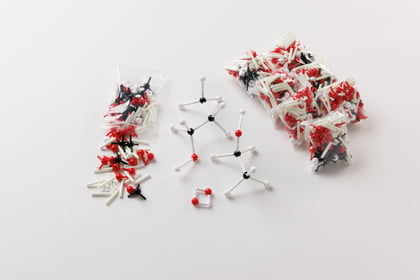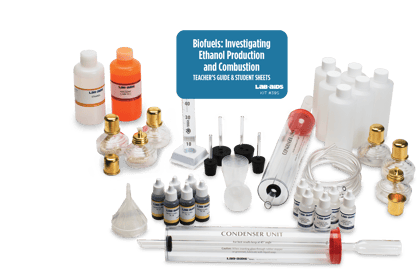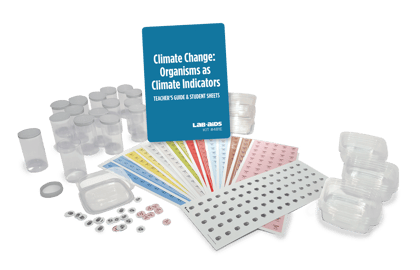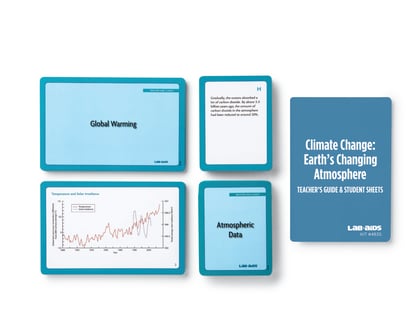Climate Change: Carbon Cycling

Over the course of several class periods, students engage in four activities related to carbon and its movement through the carbon cycle. In Part A and B students build molecular models to better understand some of the everyday reactions that allow carbon atoms to form different molecules and move from one place to another. Part C ties the previous parts together as students are introduced to, and do a basic analysis of, Earth’s major carbon sources, sinks, and associated fluxes. They also learn that when properly balanced, the carbon cycle helps maintain stable conditions, including average surface and ocean temperature.
Details at a Glance
- 2-4 Days | 2-4 ~50 minute class periods
- 1 Activity
- Accommodates unlimited classes, each with 8 groups of 4 students
- Meets our criteria for supporting literacy
- All materials are non-consumable
- Includes digital resources
- Developed in partnership with EDC
Scientific Concepts
Disciplinary Core Ideas
•ESS2.A: Earth Materials and Systems
•ESS2.C: The Roles of Water in Earth’s Surface Processes
•ESS2.D: Weather and Climate
•ESS3.C: Human Impacts on Earth Systems
•ESS3.D: Global Climate Change
Science and Engineering Practices
•Develop a model based on evidence to illustrate the relationships between systems or between components of a system.
•Use a model to provide mechanistic accounts of Phenomena.
Cross Cutting Concepts
•Empirical evidence is required to differentiate between cause and correlation and make claims about specific causes and effects.
•Systems and System Models
•When investigating or describing a system, the boundaries and initial conditions of the system need to be defined and their inputs and outputs analyzed and described using models.
Energy and Matter
•The total amount of energy and matter in closed systems is conserved.
Stability and Change
•Much of science deals with constructing explanations of how things change and how they remain stable.
•Change and rates of change can be quantified and modeled over very short or very long periods of time. Some system changes are irreversible.
•Feedback (negative or positive) can stabilize or destabilize a system.
Connections to Nature of Science
•Science knowledge is based on empirical evidence.
•Science disciplines share common rules of evidence used to evaluate explanations about natural systems.
KEY VOCABULARY: carbon cycle, carbon dioxide (CO2), carbon flux, carbon sink,
carbon source, combustion, crude oil, fossil fuel, product molecule, reactant molecule
Guides & Student Sheets
Our kits and modules provide you with everything you need so you can open, review, and teach the material confidently the next day.
- Comprehensive Teacher Guide with background information, detailed instruction, example data and answers
- Student Sheets with age appropriate background information, full procedure(s), and analysis items
- Materials necessary for the investigation (beyond common classroom items)
- Safety Data Sheets
Kit Components
- 16 Lab-Aids© Molecular Modeling Sets, 42 pieces/set
- 8 Sets of Carbon Cards, 8 cards/set




